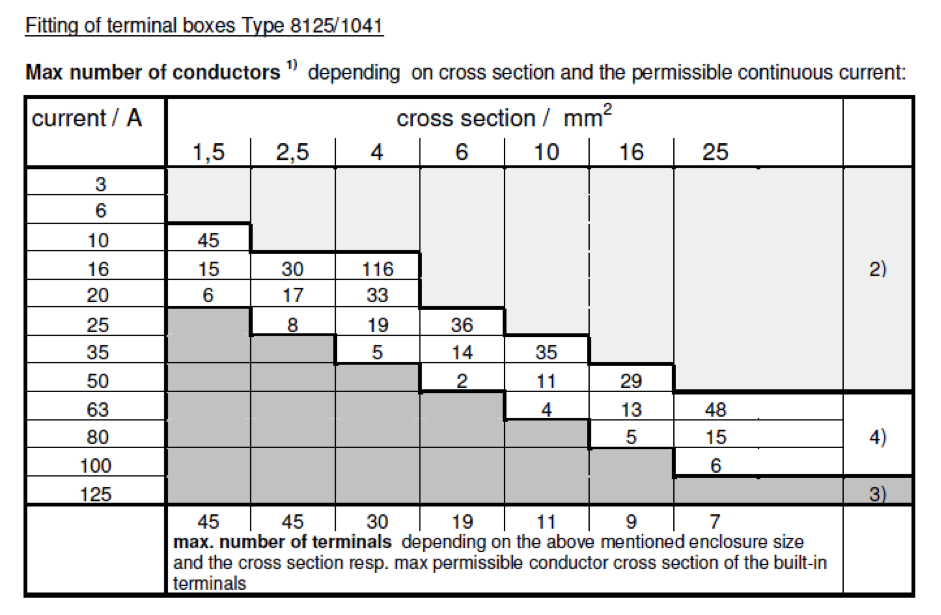Roar Solutions Can Be Fun For Anyone
Roar Solutions Can Be Fun For Anyone
Blog Article
Indicators on Roar Solutions You Should Know
Table of ContentsAn Unbiased View of Roar SolutionsOur Roar Solutions StatementsSome Ideas on Roar Solutions You Need To Know
In order to shield setups from a potential surge an approach of analysing and classifying a potentially unsafe area is needed. The function of this is to make sure the right choice and installation of tools to inevitably stop a surge and to make certain security of life.
(https://roar-solutions.webflow.io/)
No devices should be set up where the surface temperature level of the tools is more than the ignition temperature of the given risk. Below are some common dust harmful and their minimum ignition temperature. Coal Dirt 380C 225C Polythene 420C (thaws) Methyl Cellulose 420C 320C Starch 460C 435C Flour 490C 340C Sugar 490C 460C Grain Dirt 510C 300C Phenolic Resin 530C > 450C Aluminium 590C > 450C PVC 700C > 450C Residue 810C 570C The likelihood of the danger existing in a concentration high sufficient to cause an ignition will certainly vary from location to location.
In order to categorize this risk an installation is divided into locations of danger depending upon the quantity of time the unsafe exists. These areas are referred to as Zones. For gases and vapours and dirts and fibers there are 3 zones. Zone 0 Area 20 A dangerous atmosphere is very most likely to be existing and might be present for extended periods of time (> 1000 hours per year) or also constantly Zone 1 Zone 21 An unsafe environment is possible but unlikely to be existing for extended periods of time (> 10 450 C [842 F] A classification of T6 means the minimal ignition temperature is > 85 C [185 F] Harmful area electrical equipment possibly made for use in higher ambient temperatures. This would certainly suggested on the rating plate e.g. EExe II C T3 Ta + 60C( This implies at 60C ambient T3 will certainly not be exceeded) T1 T1, T2, T3, T4, T5, T6 T2 T2, T3, T4, T5, T6 T3 T3, T4, T5, T6 T4 T4, T5, T6 T5 T5, T6 T6 T6 A T Class rating of T1 means the maximum surface area temperature level produced by the instrument at 40 C is 450 C. Presuming the associated T Class and Temperature rating for the equipment are appropriate for the area, you can always utilize a tool with a more rigorous Department score than needed for the location. There isn't a clear response to this question. It really does depend on the kind of devices and what repairs need to be brought out. Devices with details examination treatments that can't be carried out in the field in order to achieve/maintain third party ranking. Have to come back to the factory if it is before the tools's service. Area Repair Service By Authorised Worker: Complex testing might not be called for nonetheless details procedures may require to be adhered to in order for the tools to keep its 3rd party rating. Authorised employees need to be employed to do the job appropriately Fixing should be a like for like replacement. New element need to be taken into consideration as a direct substitute requiring no unique screening of the tools after the fixing is full. Each tool with an unsafe rating ought to be examined independently. These are described at a high level below, but for even more comprehensive information, please refer directly to the guidelines.
The Buzz on Roar Solutions
The equipment register is a comprehensive data source of equipment records that includes a minimum collection of areas to recognize each thing's area, technical specifications, Ex classification, age, and environmental data. The ratio of In-depth to Shut inspections will be figured out by the Devices Danger, which is evaluated based on ignition risk (the probability of a source of ignition versus the possibility of a flammable ambience )and the harmful location category
( Zone 0, 1, or 2). Carrying out have a peek here a robust Risk-Based Examination( RBI )strategy is essential for ensuring conformity and security in taking care of Electric Equipment in Hazardous Locations( EEHA).
Roar Solutions - Truths

In regards to eruptive risk, a hazardous area is an environment in which an explosive atmosphere exists (or may be anticipated to be present) in amounts that require unique preventative measures for the building, installment and usage of tools. eeha certificate. In this write-up we check out the difficulties faced in the workplace, the danger control steps, and the called for expertises to work safely
It is a repercussion of modern life that we produce, store or take care of a series of gases or fluids that are regarded flammable, and a range of dusts that are considered flammable. These substances can, in certain problems, form explosive ambiences and these can have major and awful repercussions. A lot of us know with the fire triangular remove any type of among the 3 elements and the fire can not take place, yet what does this mean in the context of hazardous locations? When breaking this down right into its most basic terms it is essentially: a mix of a particular quantity of launch or leakage of a certain substance or material, blending with ambient oxygen, and the presence of a source of ignition.
In many circumstances, we can do little about the degrees of oxygen in the air, however we can have considerable influence on resources of ignition, for example electrical devices. Dangerous areas are recorded on the dangerous location classification drawing and are identified on-site by the triangular "EX" sign. Below, among various other key details, zones are divided right into three types depending on the danger, the probability and period that an eruptive ambience will certainly exist; Zone 0 or 20 is considered one of the most dangerous and Area 2 or 22 is regarded the least.
Report this page